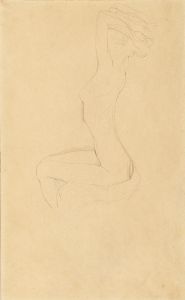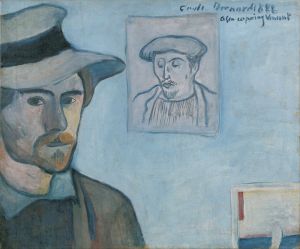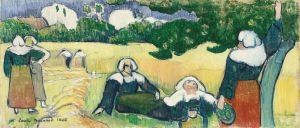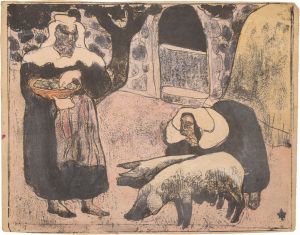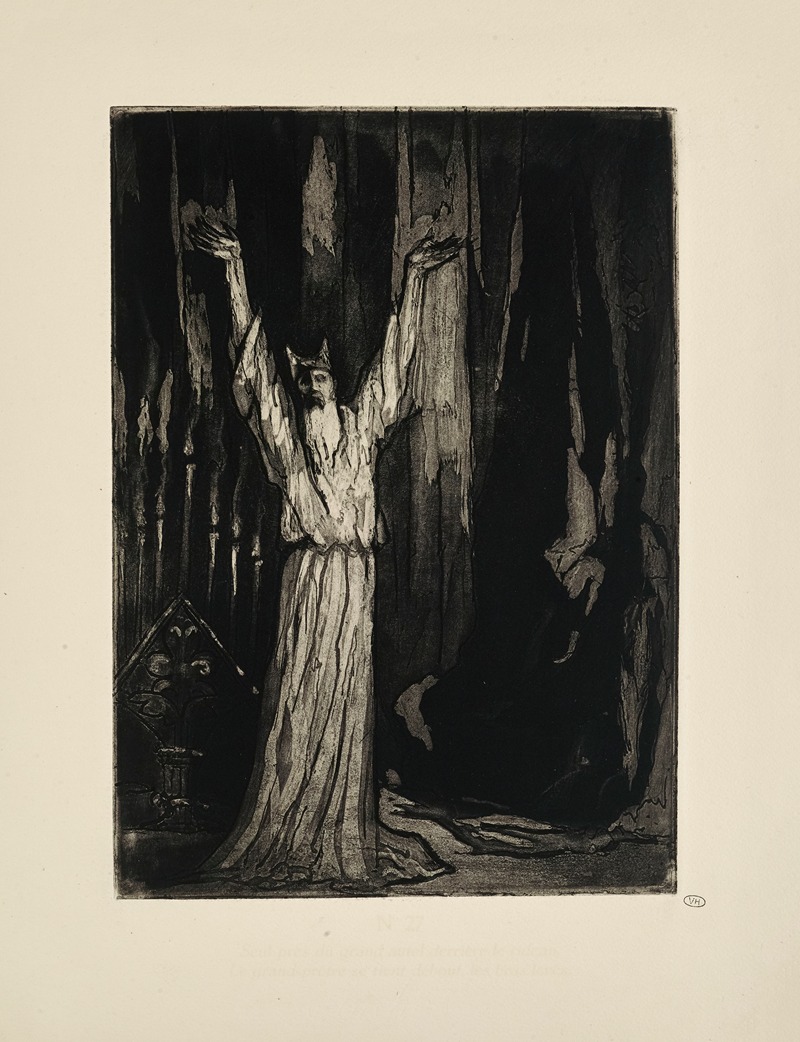
N° 27 – Seul près du grand autel derrière le rideau, Le grand-père se tient debout, les bras levés
A hand-painted replica of Emile Bernard’s masterpiece N° 27 – Seul près du grand autel derrière le rideau, Le grand-père se tient debout, les bras levés, meticulously crafted by professional artists to capture the true essence of the original. Each piece is created with museum-quality canvas and rare mineral pigments, carefully painted by experienced artists with delicate brushstrokes and rich, layered colors to perfectly recreate the texture of the original artwork. Unlike machine-printed reproductions, this hand-painted version brings the painting to life, infused with the artist’s emotions and skill in every stroke. Whether for personal collection or home decoration, it instantly elevates the artistic atmosphere of any space.
Emile Bernard was a French Post-Impressionist painter and writer, known for his significant contributions to the Symbolist movement and his association with other prominent artists of his time, such as Vincent van Gogh, Paul Gauguin, and Paul Cézanne. Bernard's work is characterized by its bold use of color, innovative compositions, and exploration of religious and philosophical themes.
The painting titled "N° 27 – Seul près du grand autel derrière le rideau, Le grand-père se tient debout, les bras levés" is one of Bernard's lesser-known works. The title, translated as "Alone near the great altar behind the curtain, The grandfather stands, arms raised," suggests a scene imbued with religious or spiritual significance. This painting reflects Bernard's interest in religious themes, which was a recurring subject in his oeuvre.
Emile Bernard was born on April 28, 1868, in Lille, France. He moved to Paris with his family in 1878, where he later studied at the École des Arts Décoratifs. Bernard's early work was influenced by Impressionism, but he soon became dissatisfied with the movement's emphasis on naturalism and light. Seeking a new direction, he developed a style known as Cloisonnism, characterized by bold outlines and flat areas of color, reminiscent of stained glass or cloisonné enamel work.
In the late 1880s, Bernard became associated with the Pont-Aven School, a group of artists who gathered in the village of Pont-Aven in Brittany. It was here that he met Paul Gauguin, with whom he developed a close friendship and artistic collaboration. Bernard's work during this period was marked by a synthesis of Symbolism and Synthetism, a style that emphasized the emotional and spiritual aspects of art over realistic representation.
The painting "N° 27 – Seul près du grand autel derrière le rideau, Le grand-père se tient debout, les bras levés" likely reflects Bernard's interest in these themes. The composition, with its focus on a solitary figure in a religious setting, suggests a moment of introspection or divine revelation. The use of a curtain in the title implies a sense of mystery or concealment, inviting viewers to contemplate the hidden meanings behind the scene.
Bernard's exploration of religious and philosophical themes was influenced by his Catholic upbringing and his interest in mysticism and spirituality. Throughout his career, he sought to express the deeper truths of human existence through his art, often drawing on religious iconography and symbolism to convey his ideas.
Despite his significant contributions to the development of modern art, Bernard's work was often overshadowed by his more famous contemporaries. However, his innovative techniques and exploration of spiritual themes have earned him recognition as a key figure in the Symbolist movement.
In summary, "N° 27 – Seul près du grand autel derrière le rideau, Le grand-père se tient debout, les bras levés" is a testament to Emile Bernard's artistic vision and his commitment to exploring the spiritual dimensions of human experience. Through his use of bold colors, innovative compositions, and symbolic imagery, Bernard invites viewers to engage with the deeper mysteries of life and art.





